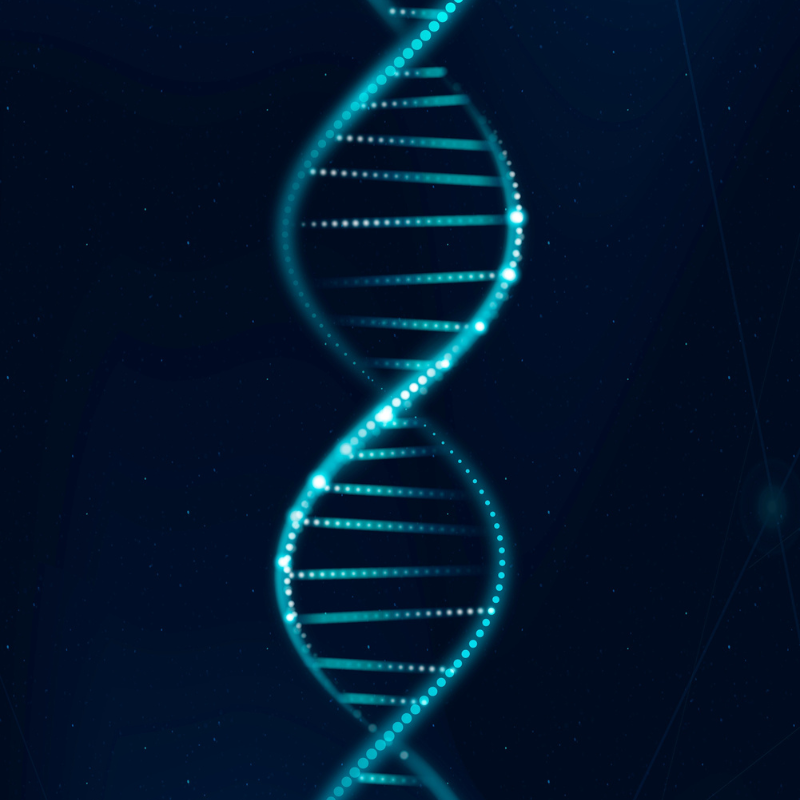Acne is the most prevalent dermatological condition before atopic dermatitis. It affects about 80% of the population, with peak incidence between 14 and 19 years depending on the patient gender1. Acne development results from several concurrent events, such as increased sebum excretion by sebocytes, alteration of inflammation around the sebaceous unit, colonization of skin by exogenous bacteria and follicular hyperkeratinization. Current human in-vitro cell models to study acne include primary sebocytes2 and immortalized cell lines3–6. Obtaining primary sebocytes is technically challenging, low throughput and generate donor-dependent results7. The most characterized cell line SZ95 harbors major chromosomal abnormalities3. Here we present an alternative that allows high-throughput studies on sebocytes, offers a great relevance to the human physiopathology and facilitates analysis in a variety of ethnicities and in both genders.
Human induced Pluripotent Stem Cells (iPSC) are obtained after reprogramming of peripheral blood mononuclear cells or fibroblasts obtained from donors under written informed consents. Reprogrammed with non-integrative, episomal vectors, iPSC exhibit a normal karyotype without chromosomal alterations. Their differentiation into sebocytes (PCi-SEB) leads to the production of batches of billions of cells with purity >90% and very low batch-to-batch variability. This allows high throughput studies to screen compound libraries or long-lasting studies that require a similar biological source from experiment to experiment.
PCi-SEB respond to all inducers of sebogenesis known to be related to acne development, e.g. testosterone, dihydrotestosterone, arachidonic (AA) and oleic (OA) acids, inflammatory agents and C. acnes, by significantly increasing their lipid content and maturation. As a result, the main pathological processes involved in acne can be thoroughly analysed at molecular levels and the effects of potential acne-reducing agents clearly explained. The availability of sebocytes from Caucasian, Asian and African sources and from the two genders adds more opportunities to the definition of proper leads to counteract skin dysregulations and to develop ethnic-specific care.
To mimic the bacterial colonization observed in acne1, PCi-SEB were treated with culture medium conditioned by C. acnes. C. acnes is a gram-positive anaerobic bacterium that resides in pilosebaceous follicles as a member of the resident bacteria. Abnormal colonization by C. acnes may be trigger by the induction of inflammatory mediators. Forty-eight hours of treatment were sufficient to significantly increase lipid production by sebocytes (Fig. 1A). Concomitantly, the number of cells dropped by 35% compared to the basal control (Fig. 1B). An inflammatory reaction was also triggered by C. acnes-conditioned medium, with higher levels of secreted pro-inflammatory cytokines (Fig. 1D, 1E). The reduction of cell number illustrates terminal maturation of sebocytes, which will die from critical lipid overload and release their content and cell debris into the extracellular space to produce sebum.

Figure 1. C. acnes supernatant effects of PCi-SEB cells compared to arachidonic acid (AA)-induced effects and their reduction by a sebostatic agent (AA + inhibitor). A. Increase in lipid contents. B. Number of cells. C-D. Quantification of IL-6 (C) and IL-8 (D) in the culture supernatant. Data are normalized to cell count. Error bars represent the standard deviation. Unpaired t-test compared to the basal control with *p<0.05 **p<0.01 ***p<0.001 ****p<0.0001 or compared to AA with $p<0.05 $$$$p<0.0001.
The enzymes that metabolize the free-fatty acid arachidonic acid (AA) are overexpressed in acne-affected skin8. Leucotrienes, prostaglandins and 15-HETE, all potent pro-inflammatory mediators and neutrophil attractants, are synthetized from AA by lipoxygenase. In our set-up, the response of PCi-SEB to AA displayed a similar profile to the response to C. acnes, although with higher intensity. AA induced the exacerbation of lipid contents with reduction of cell number and the inflammatory reaction.
The PCi-SEB model allows the investigation of key events that lead to the exacerbation of acne. Being amenable to high-throughput screening and analysis, it may lead to quick and reliable identification of anti-acne compounds and allow in-depth characterization of their mechanism of action. Besides acne, the model can be applied to other of inflammatory skin diseases, such as atopic dermatitis and psoriasis.
References:
- Williams HC, Dellavalle RP, Garner S. Acne vulgaris. Lancet Lond. Engl. 379, 361–372 (2012).
- Xia LQ et al. Isolation of human sebaceous glands and cultivation of sebaceous gland-derived cells as an in vitro model. J. Invest. Dermatol. 93, 315–321 (1989).
- Zouboulis CC, Seltmann H, Neitzel H, Orfanos CE. Establishment and characterization of an immortalized human sebaceous gland cell line (SZ95). J. Invest. Dermatol. 113, 1011–1020 (1999).
- Thiboutot D et al. Human skin is a steroidogenic tissue: steroidogenic enzymes and cofactors are expressed in epidermis, normal sebocytes, and an immortalized sebocyte cell line (SEB-1). J. Invest. Dermatol. 120, 905–914 (2003).
- Lo Celso C et al. Characterization of bipotential epidermal progenitors derived from human sebaceous gland: contrasting roles of c-Myc and beta-catenin. Stem Cells Dayt. Ohio 26, 1241–1252 (2008).
- Barrault C et al. Immortalized sebocytes can spontaneously differentiate into a sebaceous-like phenotype when cultured as a 3D epithelium. Exp. Dermatol. 21, 314–316 (2012).
- Brami-Cherrier K et al. Botulinum Neurotoxin Type A Directly Affects Sebocytes and Modulates Oleic Acid-Induced Lipogenesis. Toxins 14, 708 (2022).
- Alestas T, Ganceviciene R, Fimmel S, Müller-Decker K, Zouboulis CC. Enzymes involved in the biosynthesis of leukotriene B4 and prostaglandin E2 are active in sebaceous glands. J. Mol. Med. Berl. Ger. 84, 75–87 (2006).





